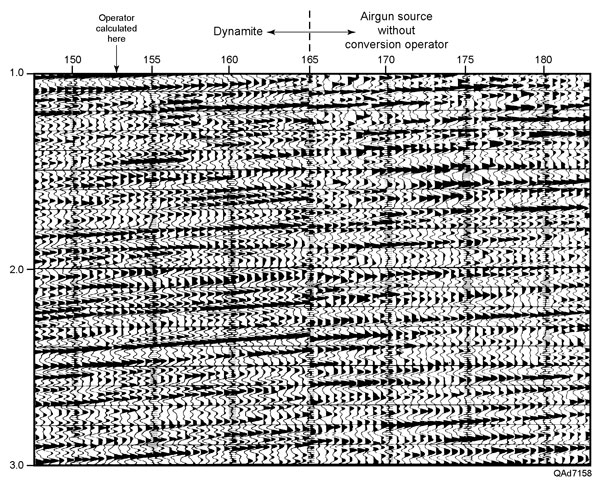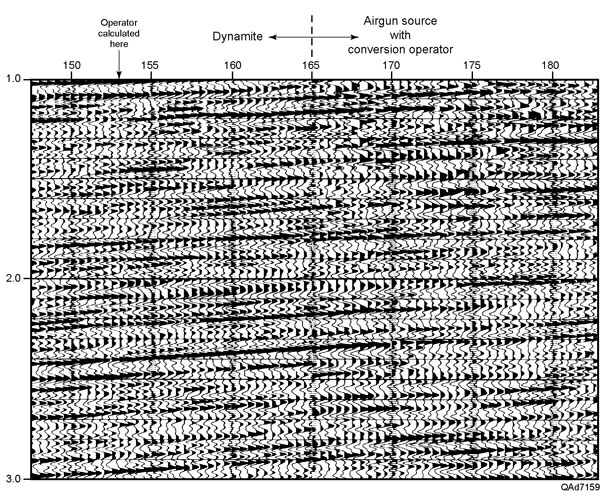![]() Click to view article in PDF format.
Click to view article in PDF format.
GCEqualizing Wavelets Produced by Different Seismic Sources*
Bob Hardage1
Search and Discovery Article #40894 (2012)
Posted March 26, 2012
*Adapted from the Geophysical Corner column, prepared by the authors, in AAPG Explorer, March, 2012, and entitled "When All  Data
Data Are Not Created Equally". Editor of Geophysical Corner is Satinder Chopra
([email protected]).
Managing Editor of AAPG Explorer is Vern Stefanic; Larry Nation is Communications Director. AAPG©2012
Are Not Created Equally". Editor of Geophysical Corner is Satinder Chopra
([email protected]).
Managing Editor of AAPG Explorer is Vern Stefanic; Larry Nation is Communications Director. AAPG©2012
1 Bureau of Economic Geology, The University of Texas at Austin ([email protected])
Tidewater areas can be difficult places to acquire consistent-quality seismic  data
data , because different sources have to be used across exposed land surfaces than what are used across shallow-water areas. Typically, explosives are used in shot holes in the onshore portion of a tidewater prospect, whereas environmental regulations may require that an air-gun source be used in shallow-water areas.
, because different sources have to be used across exposed land surfaces than what are used across shallow-water areas. Typically, explosives are used in shot holes in the onshore portion of a tidewater prospect, whereas environmental regulations may require that an air-gun source be used in shallow-water areas.
These two seismic sources produce different  basic
basic wavelets – and profiles produced with explosives and air guns rarely tie in an optimal manner at common image coordinates without using wavelet-shaping algorithms to create equivalent reflection character across targeted intervals.
wavelets – and profiles produced with explosives and air guns rarely tie in an optimal manner at common image coordinates without using wavelet-shaping algorithms to create equivalent reflection character across targeted intervals.
|
|
An example of using an explosive source and an air-gun source across a Louisiana tidewater area is documented as Figure 1 and Figure 2. This shallow-water test line was recorded twice because, at this location, explosive sources were allowed. For one profile, the source was a 30-pound (13.6-kilogram) charge positioned at a depth of 135 feet (41 meters) at each source station. For the second Considerable The challenge was that in neighboring tideland areas, regulations required that an air-gun source be used in water-covered areas – shot-hole explosives could not be used in shallow water as they had been across this initial test site, and a method had to be developed that would allow air-gun-source Said another way, the problem was to create a An approach used by many This technique was applied to the tidewater seismic The example discussed here is from a tidewater area where operating and environmental constraints forced different sources to be used on land-based and water-based seismic lines. The concept of numerical equalization of the |

 General statement
General statement

